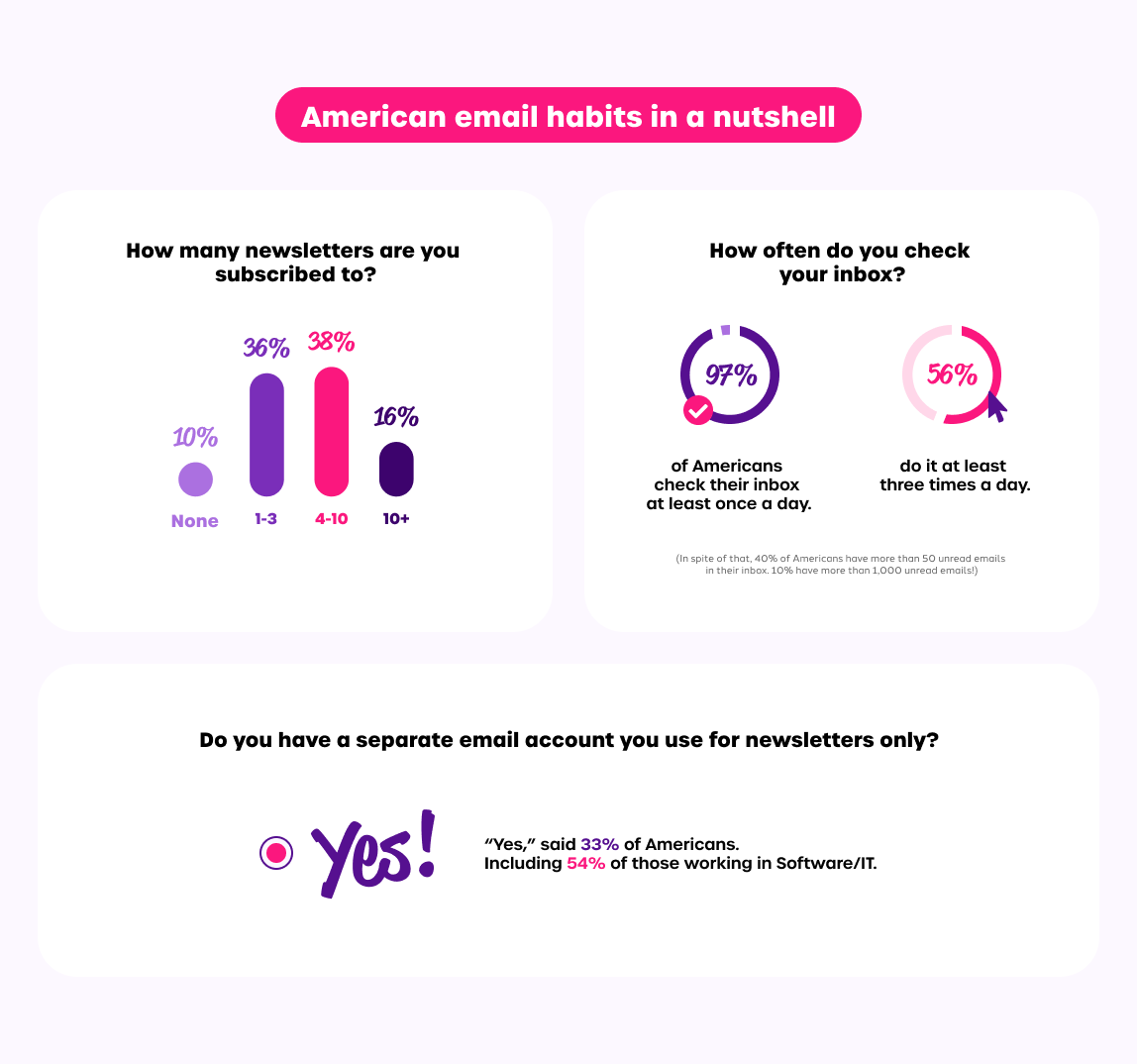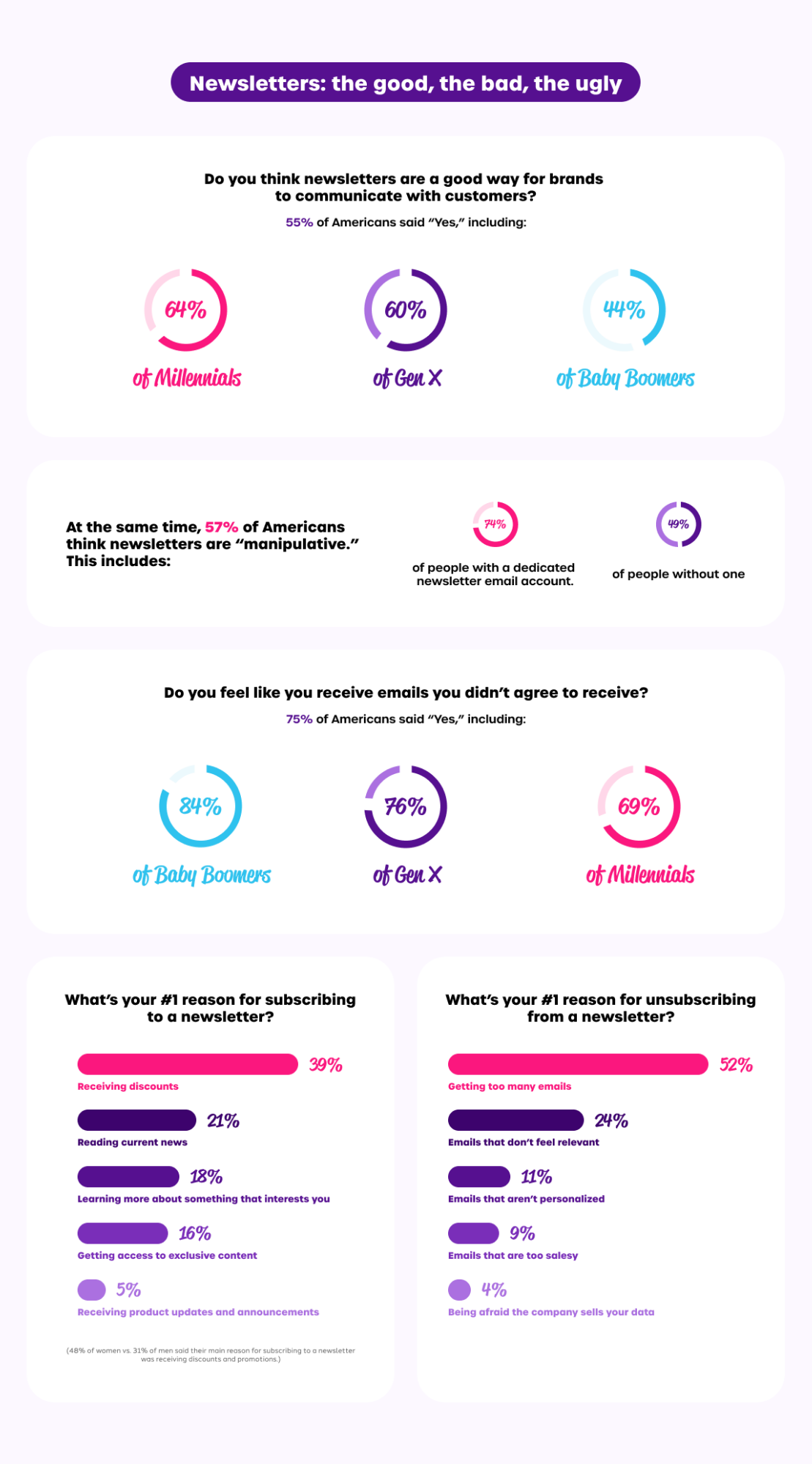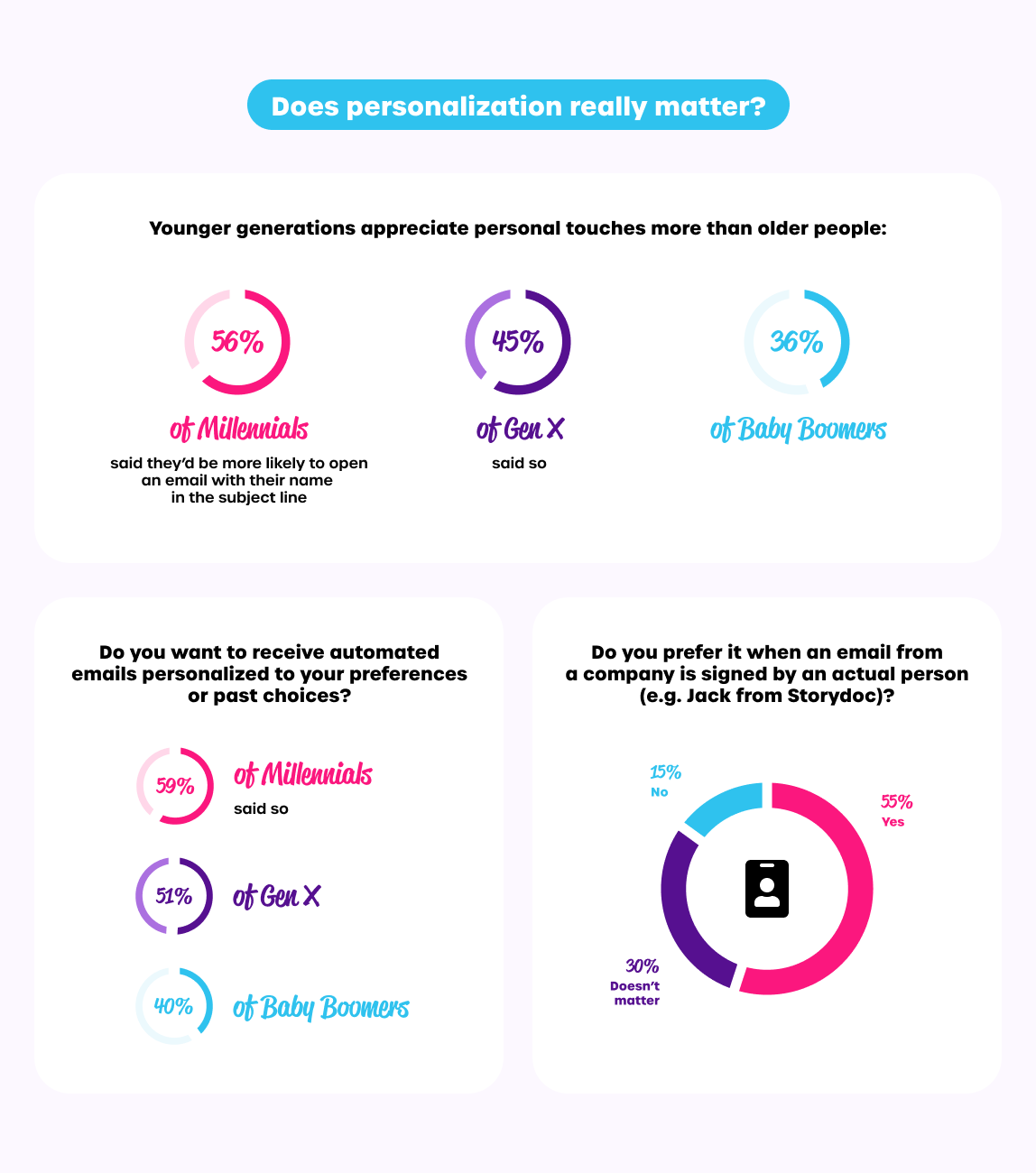These numbers are really high and show just how powerful a marketing tool email is. To get some extra context, it’s best to realize just how big a role email plays in Americans’ lives:
- 97% of Americans check their email inbox at least once a day.
- 56% do it at least three times a day.
Despite that, 40% of US email account holders had more than 50 unread emails in their inbox at the time of taking the survey and 10% admitted to having more than 1000 emails “waiting” to be opened.
On the other side of the spectrum, 36% of Americans seem to be following the inbox-zero approach, having fewer than 10 unread emails.
The most significant difference here was the one between people with dedicated newsletter email accounts and those without one:
- 45% of people who use one inbox for all emails had fewer than 10 unread messages.
- 17% of people who have a separate, newsletter-only email address had fewer than 10 emails unread.
The conclusion seems simple. We get many types of emails we don’t even bother to open and it seems that most of those are newsletters. Still… Overall, Americans have a rather favorable opinion on newsletters.
When asked whether automated email campaigns are a good way for brands to communicate with their customers, 55% of Americans agreed. This includes:
- 64% of Millennials
- 60% of Gen X
- 44% of Baby Boomers.
Younger, stereotypically more tech-savvy generations are more likely to enjoy receiving newsletters than older people. However, the most significant difference, yet again, was displayed between people with and without a dedicated newsletter-only inboxes:
- 74% of those with dedicated newsletter inboxes said newsletters were a good means of communication with customers,
- Only 46% of those who get newsletters to their main inbox said so.
(Of course, this makes all the sense in the world. If you’re interested in receiving automated communication enough to create a separate email account for it, you’re naturally inclined to be more in favor of that kind of messaging.)
All that being said, American newsletter subscribers are wary of unfair or dishonest practices employed by certain brands.
55% of our respondents said they thought automated email campaigns were designed to trick customers into spending more money. This view was more prevalent amongst men (59%) than women (50%).
In more general terms, 57% of Americans claim newsletters are “manipulative.” Interestingly, more people with dedicated newsletter inboxes would consider newsletters manipulative than those receiving newsletters to their main email account: 74% vs. 49%, respectively.
Finally, a vast majority of US email account holders feel that they receive more automated emails than what they agreed to. 75% of Americans claim they receive “a lot” of unsolicited email correspondence from brands and businesses that should better manage their email lists. Remember, effective newsletters are not just about the content itself, but also the quality of the email list. To keep good email marketing results, you should also check your list with email verification tools.
This view is expressed particularly often by older generations:
- 84% of Baby Boomers said they were receiving many unwanted automated emails.
- 76% of Gen X said so.
- 69% of Millennials were of this opinion.
Okay, so we have a general overview of Americans’ attitudes towards email marketing. But not all newsletters are created equal. We wanted to dig a little deeper into what makes people like certain newsletters and dislike others.













